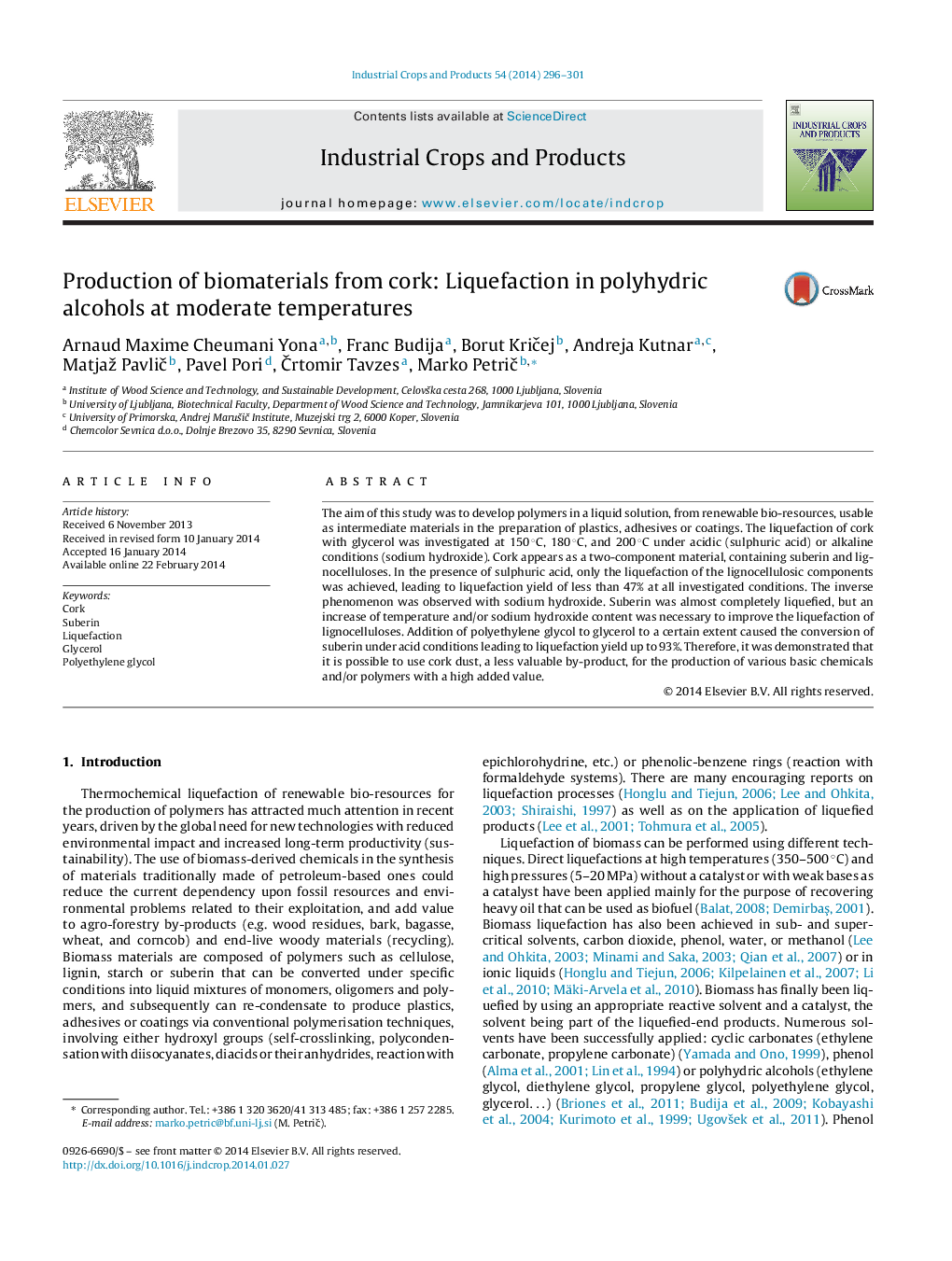| Article ID | Journal | Published Year | Pages | File Type |
|---|---|---|---|---|
| 4513382 | Industrial Crops and Products | 2014 | 6 Pages |
•Cork dust can be converted into a liquid material for preparation of bio-polymers.•Liquefaction of cork can be performed under acidic or alkaline conditions.•With the acid catalyst only lignocellulosic components of cork are liquefied.•In the alkaline environment cork suberin is also liquefied.•The highest liquefaction yields are obtained with the mixture of glycerol and PEG.
The aim of this study was to develop polymers in a liquid solution, from renewable bio-resources, usable as intermediate materials in the preparation of plastics, adhesives or coatings. The liquefaction of cork with glycerol was investigated at 150 °C, 180 °C, and 200 °C under acidic (sulphuric acid) or alkaline conditions (sodium hydroxide). Cork appears as a two-component material, containing suberin and lignocelluloses. In the presence of sulphuric acid, only the liquefaction of the lignocellulosic components was achieved, leading to liquefaction yield of less than 47% at all investigated conditions. The inverse phenomenon was observed with sodium hydroxide. Suberin was almost completely liquefied, but an increase of temperature and/or sodium hydroxide content was necessary to improve the liquefaction of lignocelluloses. Addition of polyethylene glycol to glycerol to a certain extent caused the conversion of suberin under acid conditions leading to liquefaction yield up to 93%. Therefore, it was demonstrated that it is possible to use cork dust, a less valuable by-product, for the production of various basic chemicals and/or polymers with a high added value.
Graphical abstractFigure optionsDownload full-size imageDownload as PowerPoint slide
